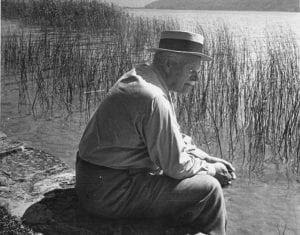In comparative anatomy, we speak of morphological phenomena in man, of organs which resemble the organs of animals.
We know, for instance, that man has lived through early stages of development in the course of his evolution.
We know the complete genealogy of the horse dating back millions of years, and on these facts the science of anatomy is founded.
There is also a comparative morphology of psychic images. Folklore is another field of research into motivation.
What I have practiced is simply a comparative phenomenology of the mind, nothing else.
If someone has a dream and we find that dream in identical form in mythology, and if this constantly repeats itself, are we not justified in saying with certainty: We are still functioning in the same way as those who created that mythological image?
Take the Eucharist.
A god is slain, pierced with a spear, is dismembered, eaten.
To this day, the piercing of a loaf of bread with a silver spear is a ritual of the Greek Church.
In the Aztec rites, Huitzilopochtli is slain, pierced with a lance.
His body consists of a dough made from the seeds of plants just as the Host is made of white flour, and the pieces are distributed and eaten.
The undivided and the divided God.
Think of the use made of the cross in Yucatan. It is the same as our adoration of the Cross.
Or the myth of Dionysos.
[Jung gave several other examples.]
The psychiatrists, in treating their cases, know that these things happen in the soul of the patients.
There are countless ideas, images of the unconscious, which have been compared to mythological concepts, because they proved to be identical.
There is only one method: the comparative method.
Comparative anatomy, the science of comparative religion. Why not then comparative psychology?
If we draw a circle and divide that circle into four equal parts and think of it as a philosophical idea, and the Chinese does the same thing, and the Indian too—do you think that it is something different when I do it?
Unscientific! Carl Jung, C.G. Jung Speaking: Interviews and Encounters, Pages 219-224

